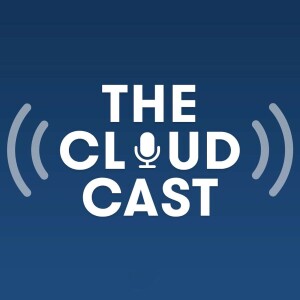
- Podcast Features
-
Monetization
-
Ads Marketplace
Join Ads Marketplace to earn through podcast sponsorships.
-
PodAds
Manage your ads with dynamic ad insertion capability.
-
Apple Podcasts Subscriptions Integration
Monetize with Apple Podcasts Subscriptions via Podbean.
-
Live Streaming
Earn rewards and recurring income from Fan Club membership.
-
Ads Marketplace
- Podbean App
-
Help and Support
-
Help Center
Get the answers and support you need.
-
Podbean Academy
Resources and guides to launch, grow, and monetize podcast.
-
Podbean Blog
Stay updated with the latest podcasting tips and trends.
-
What’s New
Check out our newest and recently released features!
-
Podcasting Smarter
Podcast interviews, best practices, and helpful tips.
-
Help Center
-
Popular Topics
-
How to Start a Podcast
The step-by-step guide to start your own podcast.
-
How to Start a Live Podcast
Create the best live podcast and engage your audience.
-
How to Monetize a Podcast
Tips on making the decision to monetize your podcast.
-
How to Promote Your Podcast
The best ways to get more eyes and ears on your podcast.
-
Podcast Advertising 101
Everything you need to know about podcast advertising.
-
Mobile Podcast Recording Guide
The ultimate guide to recording a podcast on your phone.
-
How to Use Group Recording
Steps to set up and use group recording in the Podbean app.
-
How to Start a Podcast
-
Podcasting
- Podcast Features
-
Monetization
-
Ads Marketplace
Join Ads Marketplace to earn through podcast sponsorships.
-
PodAds
Manage your ads with dynamic ad insertion capability.
-
Apple Podcasts Subscriptions Integration
Monetize with Apple Podcasts Subscriptions via Podbean.
-
Live Streaming
Earn rewards and recurring income from Fan Club membership.
-
Ads Marketplace
- Podbean App
- Advertisers
- Enterprise
- Pricing
-
Resources
-
Help and Support
-
Help Center
Get the answers and support you need.
-
Podbean Academy
Resources and guides to launch, grow, and monetize podcast.
-
Podbean Blog
Stay updated with the latest podcasting tips and trends.
-
What’s New
Check out our newest and recently released features!
-
Podcasting Smarter
Podcast interviews, best practices, and helpful tips.
-
Help Center
-
Popular Topics
-
How to Start a Podcast
The step-by-step guide to start your own podcast.
-
How to Start a Live Podcast
Create the best live podcast and engage your audience.
-
How to Monetize a Podcast
Tips on making the decision to monetize your podcast.
-
How to Promote Your Podcast
The best ways to get more eyes and ears on your podcast.
-
Podcast Advertising 101
Everything you need to know about podcast advertising.
-
Mobile Podcast Recording Guide
The ultimate guide to recording a podcast on your phone.
-
How to Use Group Recording
Steps to set up and use group recording in the Podbean app.
-
How to Start a Podcast
-
Help and Support
- Discover

Understanding & Managing Committed Cloud Spend
Tim Banks (@elchefe, Principal Cloud Economist @duckbillgroup) talks about how public cloud providers are offering committed spend programs, and ways to best use their programs to manage cloud spending.
SHOW: 590
CLOUD NEWS OF THE WEEK - http://bit.ly/cloudcast-cnotw
CHECK OUT OUR NEW PODCAST - "CLOUDCAST BASICS"
SHOW SPONSORS:
- New Relic (homepage)
- Services down? New Relic offers full stack visibility with 16 different monitoring products in a single platform.
- Usage.ai (homepage)
- Start saving up to 57% of your AWS EC2 spend in under 5 minutes with Usage AI. No code change, no downtime, no engineering work required.
SHOW NOTES:
- Duckbill Group (homepage)
Topic 1 - Welcome to the show. You’ve got a very interesting background of hands-on technical and being on the business side of things. Tell us a little bit about your background and what you focus on at Duckbill Group.
Topic 2 - Let’s start by talking about this trend of long-term cloud contracts. Why are we seeing more and more announced, and who does it seem to benefit more (cloud provider or customer)?
Topic 2a - How do companies typically size these deals? Is it some percentage of current spend forecasted forward, or some aspirational goal, or something else?
Topic 3 - When a company signs up for one of these long-term committed spend contracts, what are the mechanics of the contract? Is it just “all-you-can-eat” technology, or do they tend to include additional capabilities/services, etc?
Topic 4 - What have you found to be the behavior of companies that sign these contracts? Does it lead to more projects getting created, or more experimentation, or any other unintended consequences?
Topic 5 - At what point do companies start re-evaluating the contracts? What happens if they find themselves way below expected spending expectations?
Topic 6 - Have you seen any new behaviors from the cloud providers once they sign a contract, whereas one group (or service) is pushing hard to capture a bigger portion of the contract?
FEEDBACK?
- Email: show at the cloudcast dot net
- Twitter: @thecloudcastnet
More Episodes
 2025-07-09
2025-07-09
 2025-07-06
2025-07-06
 2025-07-01
2025-07-01
 2025-06-25
2025-06-25
 2025-06-22
2025-06-22
 2025-06-15
2025-06-15
 2025-06-11
2025-06-11
 2025-06-08
2025-06-08
 2025-06-04
2025-06-04
 2025-06-01
2025-06-01
 2025-05-28
2025-05-28
 2025-05-25
2025-05-25
 2025-05-21
2025-05-21
 2025-05-14
2025-05-14
 2025-05-11
2025-05-11
 2025-05-07
2025-05-07
 2025-05-04
2025-05-04
Create your
podcast in
minutes
- Full-featured podcast site
- Unlimited storage and bandwidth
- Comprehensive podcast stats
- Distribute to Apple Podcasts, Spotify, and more
- Make money with your podcast
It is Free
- Privacy Policy
- Cookie Policy
- Terms of Use
- Consent Preferences
- Copyright © 2015-2025 Podbean.com



